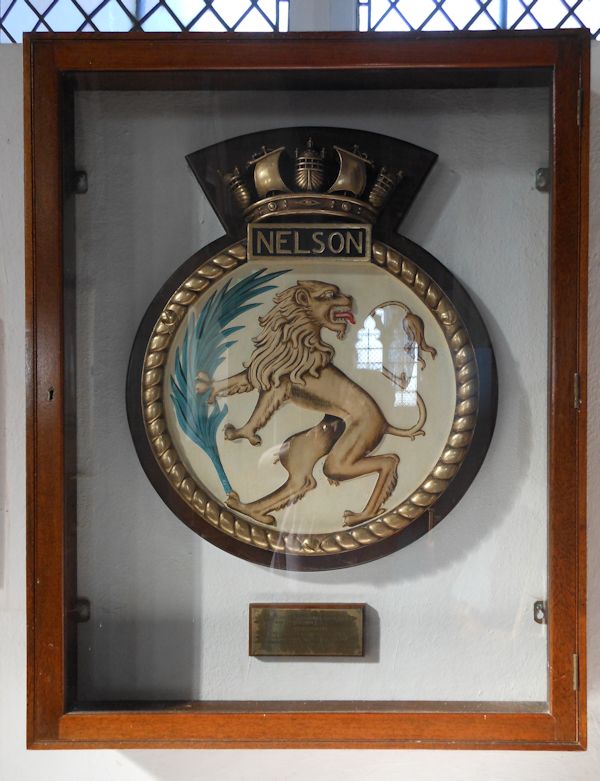Following Nelsonís Footsteps Part 2
History Repeating
We can all recall the year of 1982 when the Falkland Islands were invaded by the Argentineansí, seeing pictures of their flag flying over the British dependency Islands, with a task force being hurriedly sent from Great Britain to recapture our Islands. During the year of 1770, the Falkland Islands were also in dispute, by both Spain and Great Britain. There was an overwhelming Spanish squadron which suddenly appeared, and compelled the British occupants of the islands to lower their flag and replacing it with the Spanish.
The insult aroused public indignation in England to the highest degree; and while peremptory
demands for reparation were dispatched to Spain, a number of ships of war were ordered at once into commission. Among these was the "Raisonnable," the command of which was appointed to Nelson's uncle, Captain Maurice Suckling. Before this conflict had begun
Suckling had promised to provide for one of his sister's children, as the family were very poor. Not enjoying his school life Horatio begged his father to send him to sea. This request of his father for Horatio to join the navy staggered Suckling, who knew well the lad's puny frame and fragile constitution; "What has poor little Horatio done," he said, "that he, being so weak, should be sent to rough it at sea? But let him come, and if a cannonball takes off his head, he will at least be provided for."
The first account we have of Nelson ever visiting London, was sometime during the winter of 1770, on his way to join the Raisonnable, which was docked at Chatham in Kent. Escorted from Norfolk to Kentish Town London, by his father Edmond, he had a stopover for the night in the house of his uncle William Suckling, (Nelsonís motherís brother) who held a post as a commissioner in the Excise Office at the Custom House at Billingsgate. His uncle William owned a handsome mansion, which stood on the corner of what is today's Gaisford Street and Kentish Town Road. The house was built of brilliant new Georgian red-brick and had fourteen very wide steps leading up to the entrance door. The next morning Nelson left unaccompanied by coach to Chatham Dock-yard to join the ship Raisonnable captained by his uncle Maurice; walking up the gang-plank for the first time this twelve-year-old Norfolk lad was about to start his duties as an ordinary seaman. After the ship cast off from the Kent coast Nelson immediately suffered seasickness, a condition he would have to live with for the rest of his life.
Nelsonís Naval Career

Nelsonís naval career is well documented in many books; therefore just a brief account is necessary before continuing with his private life in London.
His first experience of combat came at the age of seventeen and he was only twenty when he took his first command of a ship in the American War of Independence. In 1777 aged just 19 he made his way to Crutched Friars in London, where he took and passed his exams to become a lieutenant.
During the French Revolutionary War, he was involved in a great deal of action in the Mediterranean. On the 12th July 1794, Nelson was in Corsica directing bombardment of the French positions. A shot hit one of the sandbanks near Nelson and the debris struck him in the right eye. Nelson was forced to seek medical attention, although his wound was soon bandaged and he returned to action, the eye was badly damaged and he eventually lost the sight in the right eye!
He was in command during the capture of several Spanish ships during the Battle of Cape Vincent. That outstanding success brought him to the attention of the British public for the first time and earned him a knighthood. He was hit by gunfire in 1797, during the unsuccessful attempt to capture the Spanish port of Santa Cruz de Tenerife, ordering the amputation of his right arm so that he could immediately return to battle.
On his arrival back in England, he was given a heroís welcome and the Freedom of the City of London. Prior to Trafalgar Nelsonís greatest success came in the summer of 1798 when he led the destruction of the French fleet at the Battle of the Nile, leaving the French commander, Napoleon Bonaparte, stranded. When the news arrived back in England there were great celebrations, with church bells rung and public feasts. Nelson was fÍted and elevated to Baron Nelson of the Nile.
Later that year he was awarded the title ĎDuke of Brontťí by the King of Naples and after the Battle of Copenhagen in 1801 he gained the rank of Viscount. With the outbreak of the Napoleonic War in 1803 the country was under the very real threat of invasion by Napoleon, who had assembled one hundred and sixty thousand men along the Atlantic coast. In Britain, a volunteer force was recruited and a string of defensive Martello towers constructed around the coast but it would have been no match for the French if they could have crossed the Channel. Nelson was given command of the Mediterranean fleet, with HMS Victory as his flagship.
Nelson Finds a Wife
During the year of 1785, he met Frances Nisbet on the Island of Nevis. Nevis is one of the lesser knowns of the Caribbean Islands and is 36-square-mile and lies about 200 miles south of Puerto Rico, and just west of Antigua. Nelson and Frances (Fanny) were married the following year on the Island. Frances was born of wealthy parents on Nevis, she was orphaned at a fairly young age, and married a doctor, Josiah Nisbet. The couple moved to England and lived briefly in the close at Salisbury Cathedral. Josiah Nisbet became seriously ill shortly after arriving in England and died on 5 October 1781, leaving Fanny with their seventeen-month old child Josiah, but with no other provision. Fanny and her infant son returned to Nevis and lived with her uncle, John Richardson Herbert at his house. Nelson was a frequent visitor at her uncle's house which is where they first met.
On the return voyage home, Nelson became so ill it was not expected he would live to reach England. Together with his wife they spent Christmas that year at 5 Cavendish Square, shortly afterwards they took lodgings just south of Oxford Street at 10 Great Marlborough Street, then at 6 Princess Street. They did not feel at home in either place. Mrs Nelson was feeling unwell complaining that the London smoke was affecting her lungs. Nelson and his wife left London for Bath, Bristol and Exmouth in Devon. During their first year of marriage, Nelson was laid off on half pay, spending the next five years at the Burnham Thorpe parsonage, unemployed, until being recalled by the navy for the war against France in 1793.
London Time

Follow Us
The contents of this website are the property of knowledgeoflondon.com and therefore must not be reproduced without permission. Every effort is made to ensure the details contained on this website are correct, however, we cannot accept responsibility for errors and omissions.
© Copyright 2004 -
Contact Us | Advertise